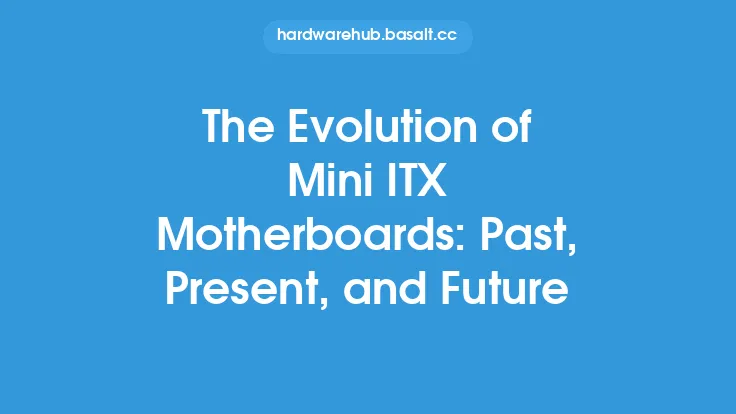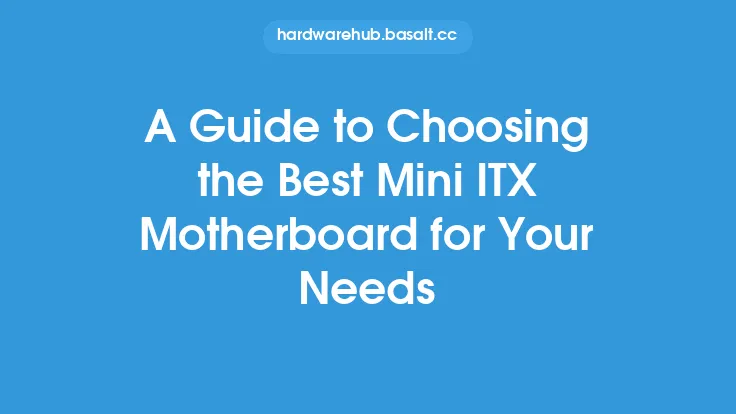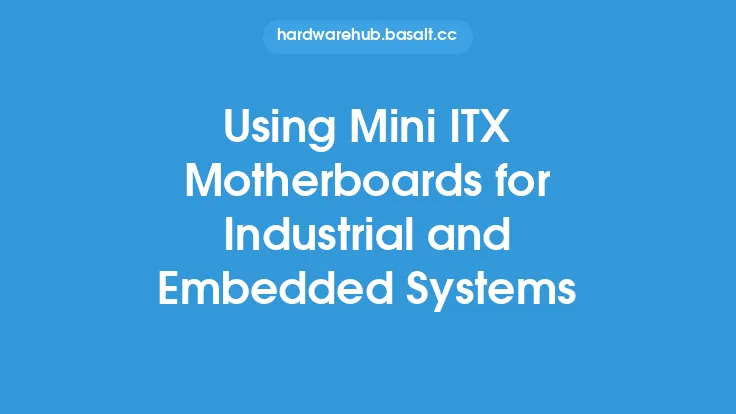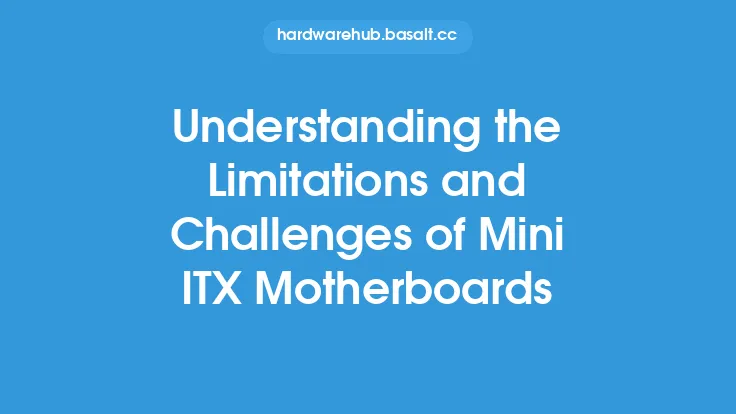The Mini ITX motherboard is a compact and efficient form factor that has gained popularity in recent years due to its small size, low power consumption, and versatility. Measuring just 6.7 inches by 6.7 inches, the Mini ITX motherboard is the smallest of all the standard form factors, making it an ideal choice for small form factor (SFF) systems, home theaters, and other applications where space is limited.
Introduction to Mini ITX Motherboard
The Mini ITX motherboard was first introduced by VIA Technologies in 2001 as a response to the growing demand for smaller and more efficient systems. The form factor was designed to be compatible with the existing ATX infrastructure, making it easy for manufacturers to adapt and produce Mini ITX motherboards. The Mini ITX motherboard has since become a popular choice for system builders and OEMs due to its compact size, low power consumption, and affordability.
Key Features of Mini ITX Motherboard
The Mini ITX motherboard has several key features that make it an attractive choice for system builders and OEMs. Some of the key features include:
- Compact size: The Mini ITX motherboard measures just 6.7 inches by 6.7 inches, making it the smallest of all the standard form factors.
- Low power consumption: The Mini ITX motherboard is designed to be power-efficient, making it an ideal choice for systems that require low power consumption.
- Versatility: The Mini ITX motherboard supports a wide range of processors, including Intel and AMD CPUs, and has a variety of expansion options, including PCI Express, USB, and SATA.
- Affordability: The Mini ITX motherboard is generally less expensive than larger form factors, making it an attractive choice for system builders and OEMs.
Applications of Mini ITX Motherboard
The Mini ITX motherboard has a wide range of applications, including:
- Small form factor (SFF) systems: The Mini ITX motherboard is ideal for SFF systems, such as home theaters, media centers, and gaming consoles.
- Home theaters: The Mini ITX motherboard is a popular choice for home theaters due to its compact size, low power consumption, and affordability.
- Industrial control systems: The Mini ITX motherboard is used in industrial control systems due to its reliability, durability, and low power consumption.
- Embedded systems: The Mini ITX motherboard is used in embedded systems, such as point-of-sale terminals, kiosks, and digital signage.
Technical Specifications of Mini ITX Motherboard
The Mini ITX motherboard has several technical specifications that are important to consider when building or purchasing a system. Some of the key technical specifications include:
- Processor support: The Mini ITX motherboard supports a wide range of processors, including Intel and AMD CPUs.
- Chipset: The Mini ITX motherboard uses a variety of chipsets, including Intel and AMD chipsets.
- Memory: The Mini ITX motherboard supports a variety of memory types, including DDR3, DDR4, and DDR5.
- Expansion options: The Mini ITX motherboard has a variety of expansion options, including PCI Express, USB, and SATA.
- Power consumption: The Mini ITX motherboard is designed to be power-efficient, with a typical power consumption of around 65W.
Advantages and Disadvantages of Mini ITX Motherboard
The Mini ITX motherboard has several advantages and disadvantages that are important to consider when building or purchasing a system. Some of the key advantages include:
- Compact size: The Mini ITX motherboard is the smallest of all the standard form factors, making it ideal for SFF systems and other applications where space is limited.
- Low power consumption: The Mini ITX motherboard is designed to be power-efficient, making it an ideal choice for systems that require low power consumption.
- Affordability: The Mini ITX motherboard is generally less expensive than larger form factors, making it an attractive choice for system builders and OEMs.
Some of the key disadvantages include:
- Limited expansion options: The Mini ITX motherboard has limited expansion options compared to larger form factors, making it less suitable for systems that require multiple expansion cards.
- Limited cooling options: The Mini ITX motherboard has limited cooling options due to its compact size, making it less suitable for systems that require high-performance cooling.
Conclusion
The Mini ITX motherboard is a compact and efficient form factor that has gained popularity in recent years due to its small size, low power consumption, and versatility. With its wide range of applications, including SFF systems, home theaters, and industrial control systems, the Mini ITX motherboard is an ideal choice for system builders and OEMs. While it has several advantages, including compact size, low power consumption, and affordability, it also has several disadvantages, including limited expansion options and limited cooling options. Overall, the Mini ITX motherboard is a popular choice for systems that require a compact and efficient design, and its evergreen information aspect makes it a reliable and durable option for a wide range of applications.





